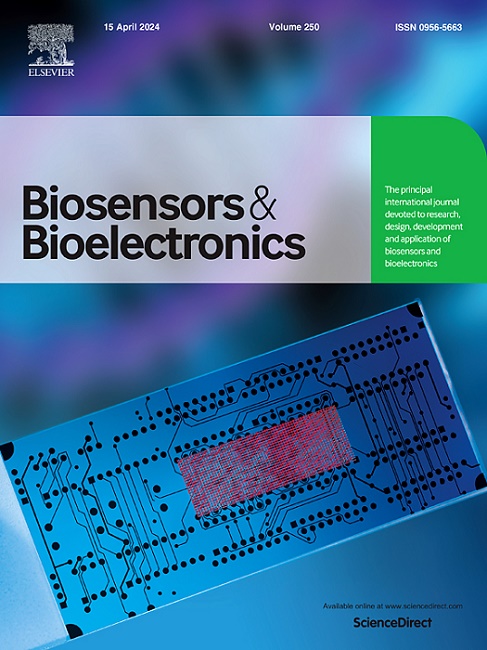用于揭示双酚 S 在低剂量持续暴露条件下对大脑有机体神经毒性影响的多通道微流控装置
IF 10.7
1区 生物学
Q1 BIOPHYSICS
引用次数: 0
摘要
双酚 S 是一种广泛用于制造日常用品的增塑剂,但人们对其对人体健康,尤其是对胎儿大脑发育的不良影响知之甚少。由于大脑的复杂性和微妙性,揭示环境污染对人类胎儿大脑发育的有害影响仍具有挑战性。利用干细胞的应用优势,由干细胞生成的脑器官组织正在成为了解大脑发育和药物毒性测试模型的有力工具。在此,我们开发了一种用于脑器官培养的微流控芯片,以揭示低剂量持续BPS暴露对脑器官的神经毒性。我们的微流控系统中的类器官可连续培养34天,并表达了脑类器官的所有基本特性。从第 20 天开始接触 BPS,持续两周。通过免疫荧光染色和蛋白质组学评估神经毒性效应,并通过实时定量 PCR 验证。我们的结果表明,暴露于BPS会抑制神经元分化,阻碍Wnt信号通路,并导致脑区域化信号分子表达的改变。在胎儿大脑发育过程中,即使持续暴露于低剂量的 BPS 也可能导致神经中毒。总之,多通道微流控芯片为揭示不同有害化学物质对脑器官组织的影响提供了一种通用的平台技术。本文章由计算机程序翻译,如有差异,请以英文原文为准。


A multichannel microfluidic device for revealing the neurotoxic effects of Bisphenol S on cerebral organoids under low-dose constant exposure
Bisphenol S is a widely used plasticizer in manufacturing daily supplies, while little was known about its adverse effect on human health, especially on fetal brain development. Due to the complexity and subtlety of the brain, it remains challenging to reveal the hazardous effects of environmental pollution on human fetal brain development. Taking advantage of stem cell application, cerebral organoids generated from stem cells are becoming powerful tools for understanding brain development and drug toxicity testing models. Here, we developed a microfluidic chip for cerebral organoid culturing to reveal the neurotoxicity of low-dose constant BPS exposure on cerebral organoids. The organoids in our microfluidic system could be continuously cultured for 34 days and expressed all the essential properties of the cerebral organoids. Exposure to BPS was initiated from day 20 for concessive two weeks. The neurotoxic effects were evaluated by immunofluorescence staining and proteomics, and verified by quantitative real-time PCR. Our results indicated BPS exposure would inhibit neuron differentiation, hinder the Wnt signaling pathway, and cause alteration of signaling molecule expressions in brain regionalization. Even exposure to a low dose of BPS constantly might cause neurotoxicity during fetal brain development. Altogether, the multichannel microfluidic chip offers a general platform technique to reveal the effects of different hazardous chemicals on cerebral organoids.
求助全文
通过发布文献求助,成功后即可免费获取论文全文。
去求助
来源期刊

Biosensors and Bioelectronics
工程技术-电化学
CiteScore
20.80
自引率
7.10%
发文量
1006
审稿时长
29 days
期刊介绍:
Biosensors & Bioelectronics, along with its open access companion journal Biosensors & Bioelectronics: X, is the leading international publication in the field of biosensors and bioelectronics. It covers research, design, development, and application of biosensors, which are analytical devices incorporating biological materials with physicochemical transducers. These devices, including sensors, DNA chips, electronic noses, and lab-on-a-chip, produce digital signals proportional to specific analytes. Examples include immunosensors and enzyme-based biosensors, applied in various fields such as medicine, environmental monitoring, and food industry. The journal also focuses on molecular and supramolecular structures for enhancing device performance.
 求助内容:
求助内容: 应助结果提醒方式:
应助结果提醒方式:


